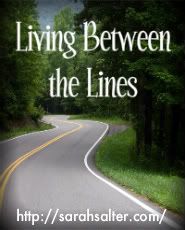|
I
love movies, but because I’m on a budget, I have to be picky about my
viewing habits. I watch movie trailers, but unless it really grabs me,
I won’t invest my money in going to the theater. The litmus test is
this: If the preview makes me cry, I’ll find the money to go.
Otherwise, I’ll wait for the movie to come on television in that
“compressed for time and space” format. As soon as I saw the preview
for Bella, I knew that I had to see it. I have seen
it five times, and I have no doubt that I’ll see it at least five more.
Bella was
written by Alejandro Monteverde as the first project for his new
production company, Metanoia Films, with his business partners, Eduardo
Verástegui and Leo Severino. As much as Bella was a
business venture, it became more an act of love. It was something they
felt deeply compelled to create; a story they felt “must” be told.
Bella is the
story of Jose (Eduardo Verástegui) and Nina (Tammy Blanchard)—two
people who are barely holding on to hope in the real world. Jose was a
superstar athlete with a $2.2 million contract. In one careless moment,
through one reckless act, his dream ended and was replaced with a
living nightmare of guilt and regret. Hiding from the world, he
cloisters himself into the kitchen as the head chef at his brother’s
restaurant. His eyes reveal more pain than any human heart should ever
have to hold. Nina is a waitress, merely trying to survive the harsh
realities of life in the city. When she discovers she’s pregnant, she
realizes that she’s lost and alone, facing the hardest decision of her
life.
Jose and Nina work together at
El Callejon, a restaurant owned by Jose’s brother, Manny. Nina has
worked there for four years, but when she’s late one too many times,
Manny fires her. When she admits to Jose than she was late because
she’s pregnant, Jose surprises everyone by walking off the job. He opts
instead to be the friend that Nina desperately needs as she struggles
to decide what to do with her future. Throughout the course of one day,
Jose and Nina search for the answers. In the process, they learn not
only about each other, but also about life and death and love and
healing.
This movie has three major
strengths: characters the audience sincerely cares about, strong visual
images, and phenomenal acting talent. Although it deals with complex
and serious topics, it is a rich, vibrant story. It displays all of the
best qualities of people: compassion, laughter, love, and
understanding. It also showcases all of the most special
characteristics of Latino culture: determination, family love and
loyalty, and vivacity. Alejandro Monteverde uses bright colors and
strong images and symbols to enhance the texture and meaning. All of
the actors in this movie are top-notch actors. Verástegui and Blanchard
give astonishingly realistic performances. All of these elements keep
this from being the sad, tragic movie that it might have been and turn
it into a movie that emanates and celebrates life.
When I was offered a copy of the
novelization of Bella, I jumped at it. I knew that
because it was a novelization, it probably wouldn’t stray too far from
the original screenplay. But because I am a lover of the written word,
I wanted to see how an author would translate the depth of emotion and
imagery into a novel.
The
novelization, written by Lisa Samson, proved to be a skillful
adaptation of the movie. Samson took the heart of the movie and fleshed
it out in a way that held true to the theme of the
|
movie
and to the
characters. I had been somewhat concerned that a novelist wouldn’t be
able to capture the strengths of the movie and adapt them to the page,
but I was pleased with how Samson achieved this. In fact, the main
strength of the book was the way Samson brought all of the strongest
elements of the movie into a sharper focus. One passage that especially
caught my attention was the scene when Jose first decided to reach out
to Nina:
Jose saw
people like him and Nina on the street all the time, pain stitching
them all together with its scarlet thread, arm to arm, hip to hip.
In this passage, Samson is
painting for us in the written word exactly the picture that Monteverde
translated to the screen: In the midst of our pain, we can draw
together and help heal each other. In an interview with The
Austin Chronicle, Alejandro Monteverde explained the essence
of Bella: “Pain is a language. When you share with
another human being, it can really bring you closer together. Each
person’s pain becomes each person’s medicine. It becomes each other’s
redemption.”
Samson also expresses this
meaning in another passage that I really loved from a scene in which
Jose is talking to Nina about her future.
Jose
reached out and settled his bandaged hand on Nina’s forearm. The sight
of it . . . undid her. This wounded soul reaching out, his own pain
somehow a comfort to her . . . and she cried. For the first time since
those blue lines marred the snowy surface of the test stick, the fear
of life, the giving of it, the taking of it, the living of it,
overwhelmed her completely.
If I had to choose between the
movie and the novelization, I believe that in this rare case, I would
choose the movie. As talented and creative as the novelization is, the
excellence of the acting and the strength of the visual imagery trump
the book. The movie and the book live up to their name: Bella
(beautiful). Bella
is a beautiful story that is a pleasure both to see and to read.

|